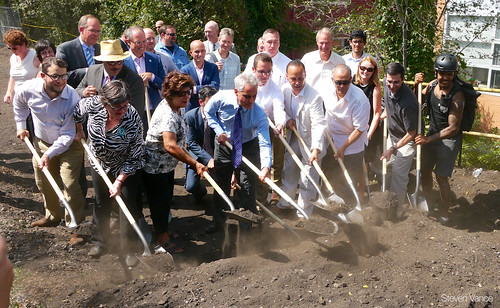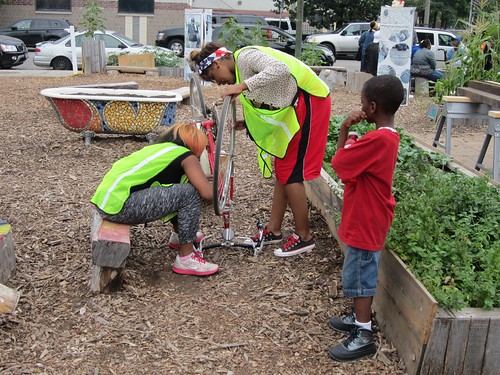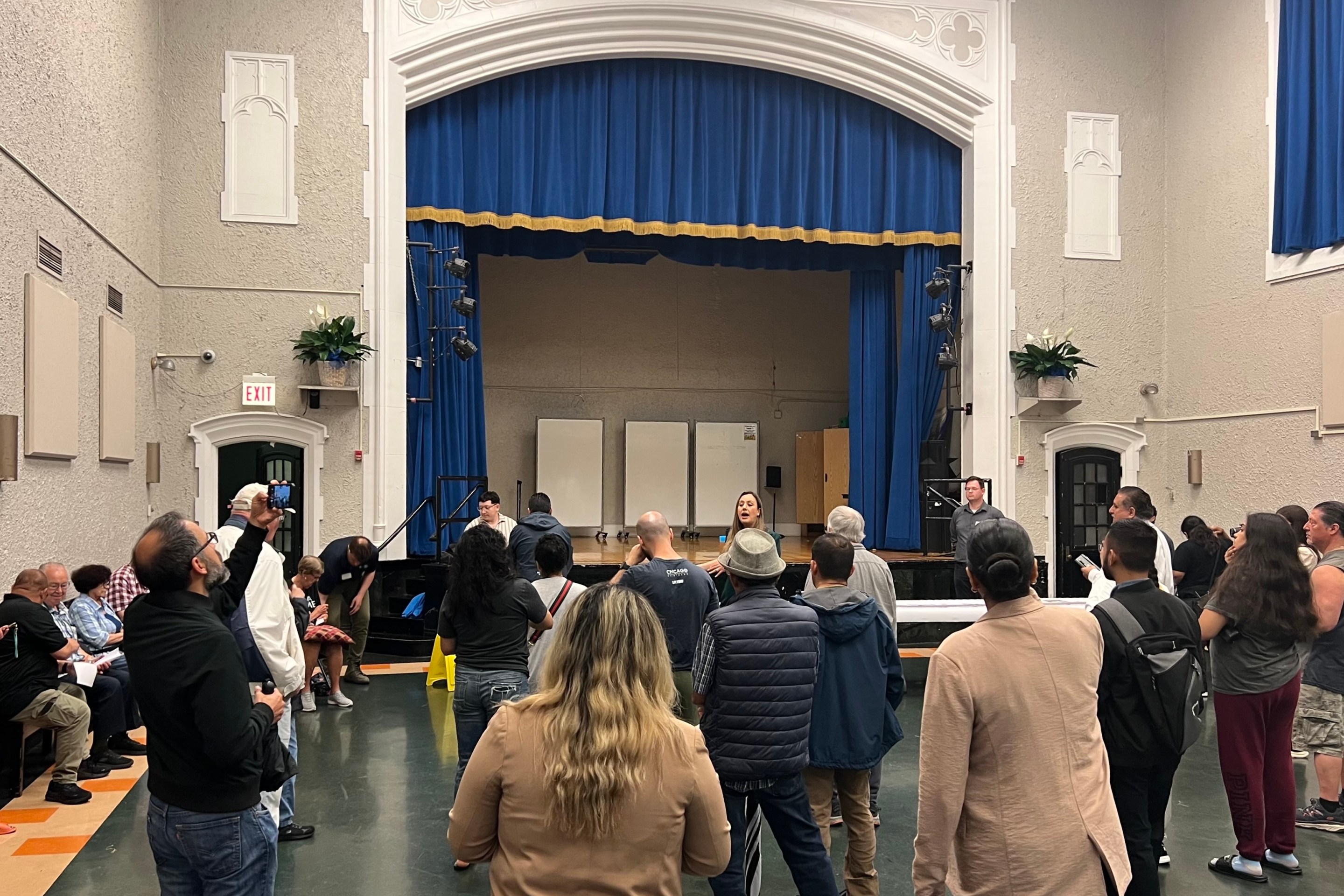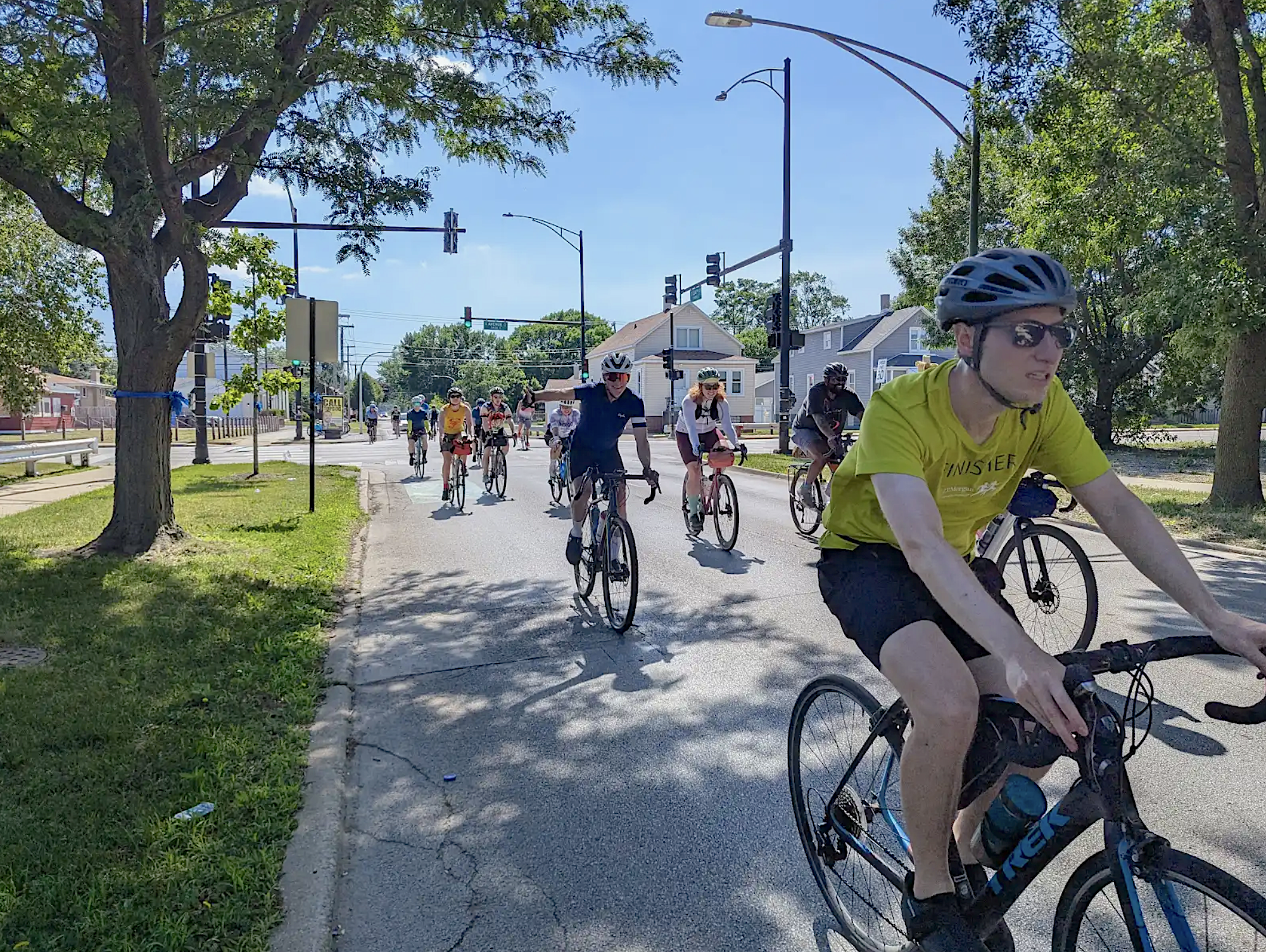Not long after Gabe Klein reported for work as commissioner of the Chicago Department of Transportation on May 16, 2011, there was speculation that he wouldn’t stick around long. Klein’s wife was remaining in Washington, D.C., where he had previously run the DOT. As an ambitious guy who had worked in several different fields, including the bicycle and car-sharing industries, it seemed likely he’d stay long enough to accomplish certain goals and then move on to his next endeavor. And, following five different CDOT chiefs in five years, some of whom seemed indifferent to sustainable transportation, a bike-riding transportation czar who voiced a commitment to "complete streets" seemed too good to be true.
So it wasn’t a shocker when Klein announced Friday that he’ll be resigning at the end of this month, moving back to the District to work in the private sector on transportation technology ventures and to start a family, but it definitely seems like the end of an era. In only two-and-a-half years, the commissioner racked up an impressive number of achievements. Rahm Emanuel’s goals of launching a large-scale bike-share system, constructing the Bloomingdale Trail and building 100 miles of protected bike lanes within his first term seemed far-fetched when first announced, but Klein accomplished the first one, and the other two are well underway.
Bus rapid transit and the Chicago Riverwalk expansion are also on the horizon, and Klein will leave behind a legacy of many less glamorous accomplishments, from publishing new CDOT guidelines on multi-modalism and sustainability, to launching automated speed cameras. I contacted a number of heavy hitters in the local transportation scene to get their take on the commissioner’s departure.
“I was in a state of depression on Friday after I got the news,” joked Peter Skosey, executive vice president of the Metropolitan Planning Council. “Gabe’s legacy is tremendous. He came into Chicago and catapulted a bunch of projects forward at a pace we hadn’t seen before. He's been phenomenal.”
“Klein has been Chicago's first true 21st Century transportation commissioner by embracing the full spectrum of transportation modes,” said Active Transportation Alliance director Ron Burke. “To Klein it's not a zero-sum battle between cars and ‘alternatives’ but giving Chicago the full menu of choices. It's the only path to great urban mobility in the real world where roadways are and will remain congested unless we find more efficient ways to get around the city. He knows that cars will always be a part of the city, but the city chokes if they're the only game in town.”
“Chicago is going to miss Gabe,” said 1st Ward Alderman Joe Moreno, a strong supporter of sustainable transportation. “His ideas, philosophy and attitude have made our city a better place. I first met him at the opening of Chicago's first on-street bike corral, which was rightfully in the 1st Ward. Since then, we've worked on multiple ward-specific and citywide projects. Gabe's departure leaves a big hole at CDOT, but also an impressive legacy and a high bar for whoever follows him.”
“The guy’s incredibly talented and he’s going to go on to do great things,” said 47th Ward Alderman Ameya Pawar, another progressive at City Hall. “With his work on bike lanes, BRT, pedestrian plazas, and People Spots, it’s like he’s taken the city from zero to a hundred in two years. The way to cement his legacy is to make sure his successor carries on Mayor Emanuel’s vision for a globally focused transportation policy. Someone like [CDOT Deputy Commissioner] Scott Kubly would be a great choice.”
“What Klein has done with bicycles, with the bike lanes, bike-share and the Bloomingdale is really great,” said John Norquist, head of the Congress for the New Urbanism. “Our office is on Dearborn, and when the protected lanes went in we joked they were a waste of money, but now they’re full of bikes. He also took a good stance on not widening roads and turning radii. He could have fought more with [the Illinois Department of Transportation] over the Circle Interchange Expansion and the Illiana Expressway, but he was excellent on the biking stuff and good on everything else, so job well done.”
“I think he did a great job of coming into a largely car-driven city, where it’s a challenge to promote biking, and trying to replicate the success he had in D.C.,” said Eboni Senai Hawkins, who founded the Chicago chapter of Red Bike and Green and serves on the League of American Bicyclists’ Equity Advisory Council. While she praised the extensive public input process for the city’s Streets for Cycling Plan 2020, she added that, in general, she would have liked to have seen more outreach and coordination on transportation projects with grassroots organizations in low-income neighborhoods and communities of color. She noted that CDOT had to remove protected lanes on Independence Boulevard in Lawndale after a backlash from residents who felt they weren’t given proper notification about the plan.
“It’s sad to see him go,” said Alex Wilson, executive director of West Town Bikes. “He really prioritized walking, biking and transit at CDOT, which was certainly appreciated by pedestrians, cyclists and transit riders. We’ve seen big strides made for bike infrastructure. As far as his effect on West Town, we were involved with implementing CDOT's Greencorps Youth bike and horticulture program, which served 600 young people in 18 locations. That was a great leap forward for youth bike education in Chicago.”
One person who’s anything but sad to see Klein go is Barnet Fagel, Illinois activist for the National Motorists Association. “I believe, with all due respect, that Klein is a two-wheeled zealot, more interested in ideology than practicality,” he said. “Chicago has long been a transportation hub, and he’s taking two wheels off that hub. The speed cameras have gotten more traffic then they planned on, a number of streets have been converted for wider bike use by restricting the space for cars, and now they’re talking about tampering with Ashland Avenue for BRT. Effectively, he doesn’t like cars, so I don’t like him.”
Actually, Klein does like automobiles. His father was a classic car buff, and once on a bike ride, I heard him compliment the beauty of a sleek orange Lotus Esprit. But I’d like to think he’d view getting panned by the motorists association as the highest praise for his years of work promoting Chicago streets that serve all road users, not just drivers.











